As a Garden Designer one of the most popular requests from clients is that they want a ‘Wildlife Garden’ and there is nothing I like more than helping people to create this. But what actually does this mean? Sadly the natural habitats of many British wildlife species have been eroded or destroyed over the years by human industrialisation and development. Large shopping complexes, housing and urban developments have replaced sprawling wildflower meadows and vast areas of countryside and wetlands. Whilst this is unavoidable with the progress of the modern world it makes it all the more important that we all play our small part in ensuring that our native British wildlife species have the habitat where it can flourish.
So what can we do? You don’t have to have a garden specifically designed to attract wildlife – anyone with an outdoor space can make small changes or additions to their garden and see their efforts rewarded when the wildlife starts to visit.
To make your garden attractive to wildlife you have to give them a reason to visit it. By fulfilling the basic necessities of any creature – food, water and shelter – you will see the species flock into your garden.
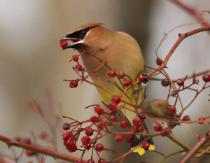 Food – When thinking about providing food for wildlife in your garden don’t think solely about the food which is physically placed out for birds or hedgehogs in feeders or on tables. Remember the trees, shrubs and flowers that we plant in our gardens provide a vast array of edible delights to our wild visitors. Consider having trees or hedging plants instead of fencing for your garden boundaries. Small trees such as a Rowan or a Crab apple and hedging plants such as Buckthorn, Dog rose, Hawthorn and Holly make great additions. Not only do these provide shelter for nesting birds and easy access to your garden for hedgehogs but many the berries of many hedging species also provide an essential food source.
Food – When thinking about providing food for wildlife in your garden don’t think solely about the food which is physically placed out for birds or hedgehogs in feeders or on tables. Remember the trees, shrubs and flowers that we plant in our gardens provide a vast array of edible delights to our wild visitors. Consider having trees or hedging plants instead of fencing for your garden boundaries. Small trees such as a Rowan or a Crab apple and hedging plants such as Buckthorn, Dog rose, Hawthorn and Holly make great additions. Not only do these provide shelter for nesting birds and easy access to your garden for hedgehogs but many the berries of many hedging species also provide an essential food source.
We would not have the majority of our fruit and vegetable produce without the work of pollinating insects such as bees, butterflies, and hoverflies so it is vital that we attract them into our garden to sustain their existence. Look to planting single nectar rich plants such as borage, marigolds, sunflowers, buddleia, phlox, sweet Williams, irises, asters, penstemons, violets or wildflowers as opposed to double or showy specimens such as roses, begonias, daffodils and tulips.
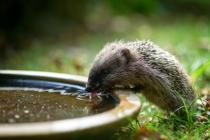
Water – All animals need to drink and having a source of water in a garden will almost always attract wildlife. Whether this be in the form of a birdbath to attract our feathered friends, a water feature, a pond or bog garden.
If you plan is to have a pond, make sure that one side of it is sloping to allow any creatures to drink or bathe and then climb out. A stepped, multi-level pond is the best design as you can place suitable planting at different levels, and this will oxygenate the water and create a happy eco-system which encourages frogs, toads and newts to take up residence and happily produce their next generation. If you don’t have the space or inclination to have a pond you can use smaller containers such as pots or even an old washing up bowl. Just ensure that different levels are built up using stones to ensure easy access and escape for thirsty wildlife visitors.
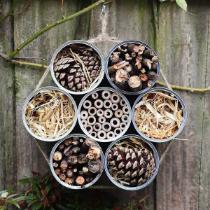
Shelter – The erosion of the natural landscape has not only decimated the food and water sources for a lot of creatures, but it has left far fewer areas for them to shelter. If you can provide a suitable environment in your garden it will not be long before you have some new visitors willing to set up home with you! Sadly, pristine cut lawns and sleek patios do not provide a good wildlife environment. Resisting the urge to mow and leaving a patch of grass long will provide shelter for many an insect or invertebrate. Likewise, a woodpile, a compost heap, a rockery, an area of weeds or nettles – whilst all these are possibly not the most attractive features of garden life, they provide a wonderful habitat for sheltering animals. Together with man-made items such as bird and bat boxes, hedgehog houses and bug hotels they can be placed in an area of the garden – a shady ‘Wild Corner’ – that is not on show if an aesthetically pleasing garden vista is what you desire. Ivy and evergreen climbers grown against a garden fence also provide a good choice for shelter for nesting winter birds.
By creating a wildlife friendly garden, or even an area of your garden, will reward you in many ways. Research has already proven that enjoying an outdoor space is good for your mental health and wellbeing and to watch beautiful birds feeding at close range and to hear the buzzing of bees and happy pollinating insects and butterflies is nature at its best. There is also a beneficial symbiotic relationship of having insects and wildlife in the garden as they are natural pest controllers. Hedgehogs, birds, bats and frogs amongst other animals will all keep our pest population down considerably.
If you do find that you still have a pest problem with aphids, slugs or snails please resist the temptation to use pesticides or slug pellets as these may harm the very creatures you are trying to attract. Try companion planting to lure the pests away from your favourite plants or vegetables. Or there are many more natural alternative pest control measures such as copper bands, nematodes or the use of egg shells, grit or beer traps for slug and snail control.
So come on let’s all make some small changes to the space we have to attract wildlife into our gardens. I guarantee you won’t regret it!
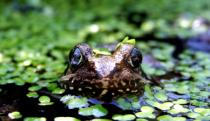

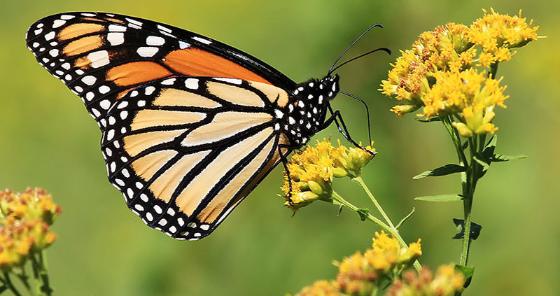
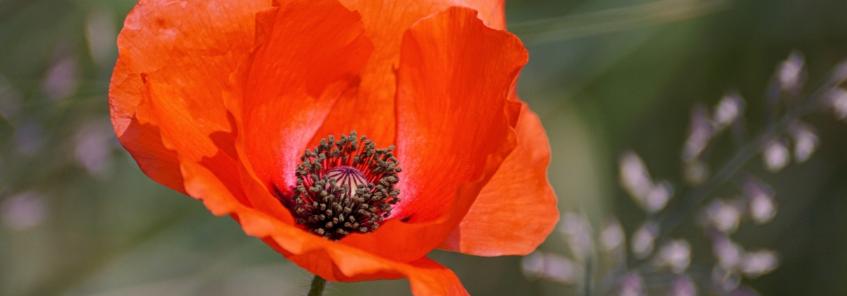
 When thinking about stimulating SIGHT in a garden the first thought turns to colour. Vibrant bright colours can provide stimulus for people with a visual sensory impairment. Bright red flowers such as Crocosmia ‘Lucifer’, oranges such as Echinacea ‘Tangerine Dream’ and yellows like Rudbeckia ‘Goldsturm’ are far easier to distinguish for someone with a visual impairment than pastel shades. Think also of the colour contrast and the use of boundary materials. For example, try painting a boundary fence black and growing white or yellow flowers to contrast and ‘pop’ out to the garden visitor. Or plant tall contrasting grasses that move in the wind. Also don’t forget to consider using colourful foliage and plants that have fruits and berries especially through the winter months.
When thinking about stimulating SIGHT in a garden the first thought turns to colour. Vibrant bright colours can provide stimulus for people with a visual sensory impairment. Bright red flowers such as Crocosmia ‘Lucifer’, oranges such as Echinacea ‘Tangerine Dream’ and yellows like Rudbeckia ‘Goldsturm’ are far easier to distinguish for someone with a visual impairment than pastel shades. Think also of the colour contrast and the use of boundary materials. For example, try painting a boundary fence black and growing white or yellow flowers to contrast and ‘pop’ out to the garden visitor. Or plant tall contrasting grasses that move in the wind. Also don’t forget to consider using colourful foliage and plants that have fruits and berries especially through the winter months.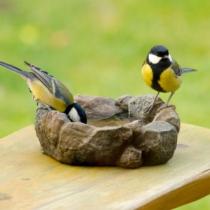 When incorporating SOUND in a garden it is important to remember this is not just about what is in the garden but what is attracted to it and visits it. Placing bird feeders and a bird bath in the garden should attract our feathered friends who joyously flap their wings and calm us with their birdsong. Likewise, bees and other buzzing insects are attracted to nectar rich planting. Sound can also be provided by plants that rustle or create moment with their leaves or seedpods and also by different floor material such as crunchy gravel. Try planting specimens such as Phyllostachys aurea (bamboo), Lunaria annua (Honesty) and Phormium (New Zealand flax) to bring sound into the garden.
When incorporating SOUND in a garden it is important to remember this is not just about what is in the garden but what is attracted to it and visits it. Placing bird feeders and a bird bath in the garden should attract our feathered friends who joyously flap their wings and calm us with their birdsong. Likewise, bees and other buzzing insects are attracted to nectar rich planting. Sound can also be provided by plants that rustle or create moment with their leaves or seedpods and also by different floor material such as crunchy gravel. Try planting specimens such as Phyllostachys aurea (bamboo), Lunaria annua (Honesty) and Phormium (New Zealand flax) to bring sound into the garden.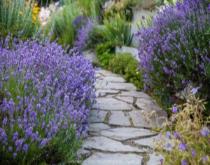 SMELL – Having plants that exude fragrance at different parts of the garden can excite or calm. Who doesn’t love a plant that smells of chocolate (Cosmos atrosanguineus – Chocolate cosmos) or curry (Helichrysum italicum – curry plant)? Highly scented planting placed adjacent to a seat or on a paths edge or scaling a walk-through archway can provide pleasurable scent along the garden journey. Try a scented Jasmine such as Jasminum floridum. Herbs which can be touched, crushed or brushed past such as rosemary, mint and lavender are particularly good for providing scent in the garden.
SMELL – Having plants that exude fragrance at different parts of the garden can excite or calm. Who doesn’t love a plant that smells of chocolate (Cosmos atrosanguineus – Chocolate cosmos) or curry (Helichrysum italicum – curry plant)? Highly scented planting placed adjacent to a seat or on a paths edge or scaling a walk-through archway can provide pleasurable scent along the garden journey. Try a scented Jasmine such as Jasminum floridum. Herbs which can be touched, crushed or brushed past such as rosemary, mint and lavender are particularly good for providing scent in the garden. TOUCH – a sensory garden needs to be tactile whether this be through the planting or the construction materials and features. From soft feathery grasses such as Stipa tenuissima ‘Ponytails’ (Mexican Feather grass) to spongy mosses like Stipa tenuissima ‘Ponytails’ (Mexican Feather grass), from smooth pebbles to flowing water, elements should be easily accessible to the inquisitive hand.
TOUCH – a sensory garden needs to be tactile whether this be through the planting or the construction materials and features. From soft feathery grasses such as Stipa tenuissima ‘Ponytails’ (Mexican Feather grass) to spongy mosses like Stipa tenuissima ‘Ponytails’ (Mexican Feather grass), from smooth pebbles to flowing water, elements should be easily accessible to the inquisitive hand. And finally maybe the best of all – TASTE! So many edible plants fruits and vegetables can be cultivated in the garden. As well as the usual strawberries and well-known herbs don’t forget to add some surprises like Borago officinalis (Borage), Tropaeolum majus (Nasturtium) or Calendula officinalis (Pot marigold) which can all be picked in the garden and sprinkled on salads.
And finally maybe the best of all – TASTE! So many edible plants fruits and vegetables can be cultivated in the garden. As well as the usual strawberries and well-known herbs don’t forget to add some surprises like Borago officinalis (Borage), Tropaeolum majus (Nasturtium) or Calendula officinalis (Pot marigold) which can all be picked in the garden and sprinkled on salads.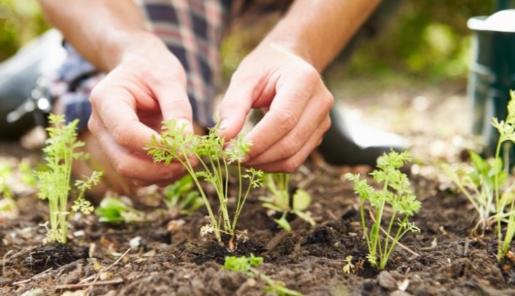
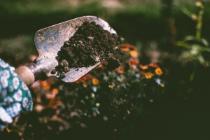 There is much research advocating that gardening is good for our mental health. People suffering from anxiety and depression are often advised by their GP’s to exercise more, get out into green spaces and join social groups such as community gardens. However the current advice is to ‘Stay at Home, Protect the NHS and Save Lives’. Therefore sadly the benefits of socially prescribed community activity is no longer possible now and for the foreseeable future. There are many community developments that have been invaluable projects to support people suffering with mental health issues. But these community projects have sadly been shelved temporarily as we are in a lock down situation. Whilst parks and green spaces remain open in England, the guidance is strict that they should only be used as places of daily exercise and no gatherings are allowed. So this has severed the community aspect of gardening that so many initiatives within mental health have relied upon.
There is much research advocating that gardening is good for our mental health. People suffering from anxiety and depression are often advised by their GP’s to exercise more, get out into green spaces and join social groups such as community gardens. However the current advice is to ‘Stay at Home, Protect the NHS and Save Lives’. Therefore sadly the benefits of socially prescribed community activity is no longer possible now and for the foreseeable future. There are many community developments that have been invaluable projects to support people suffering with mental health issues. But these community projects have sadly been shelved temporarily as we are in a lock down situation. Whilst parks and green spaces remain open in England, the guidance is strict that they should only be used as places of daily exercise and no gatherings are allowed. So this has severed the community aspect of gardening that so many initiatives within mental health have relied upon.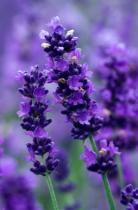 This time has made me consider why I love gardening and nature so much. Unlike many, gardening for me is not about community spirit and getting together with other people, although I can truly appreciate the benefit of this for a person’s mental well being. No, for me gardening is a beautifully solitary activity. Whatever the weather I thrive on being able to be outside in my garden. The sights and smells, the soil on my hands, the seedlings emerging, the first fruits appearing, all wondrous gifts from mother nature that we have to cherish. When I am in a garden I can immediately feel any stress and anxiety wane away as I focus on what I am doing or simply close my eyes and open my senses to what is around – the smells, the sounds and the feel of the garden.
This time has made me consider why I love gardening and nature so much. Unlike many, gardening for me is not about community spirit and getting together with other people, although I can truly appreciate the benefit of this for a person’s mental well being. No, for me gardening is a beautifully solitary activity. Whatever the weather I thrive on being able to be outside in my garden. The sights and smells, the soil on my hands, the seedlings emerging, the first fruits appearing, all wondrous gifts from mother nature that we have to cherish. When I am in a garden I can immediately feel any stress and anxiety wane away as I focus on what I am doing or simply close my eyes and open my senses to what is around – the smells, the sounds and the feel of the garden.